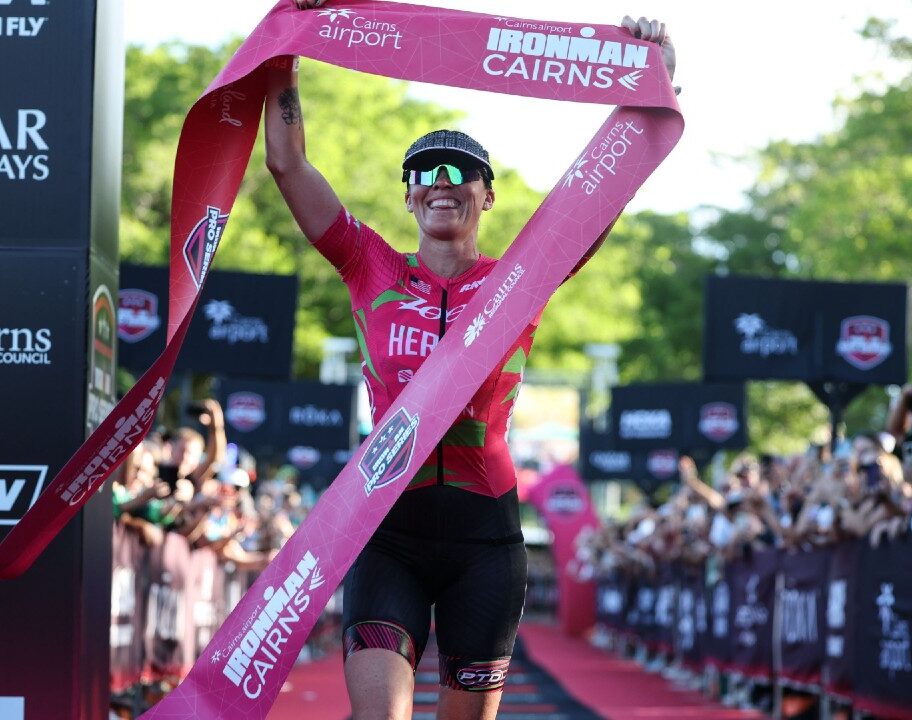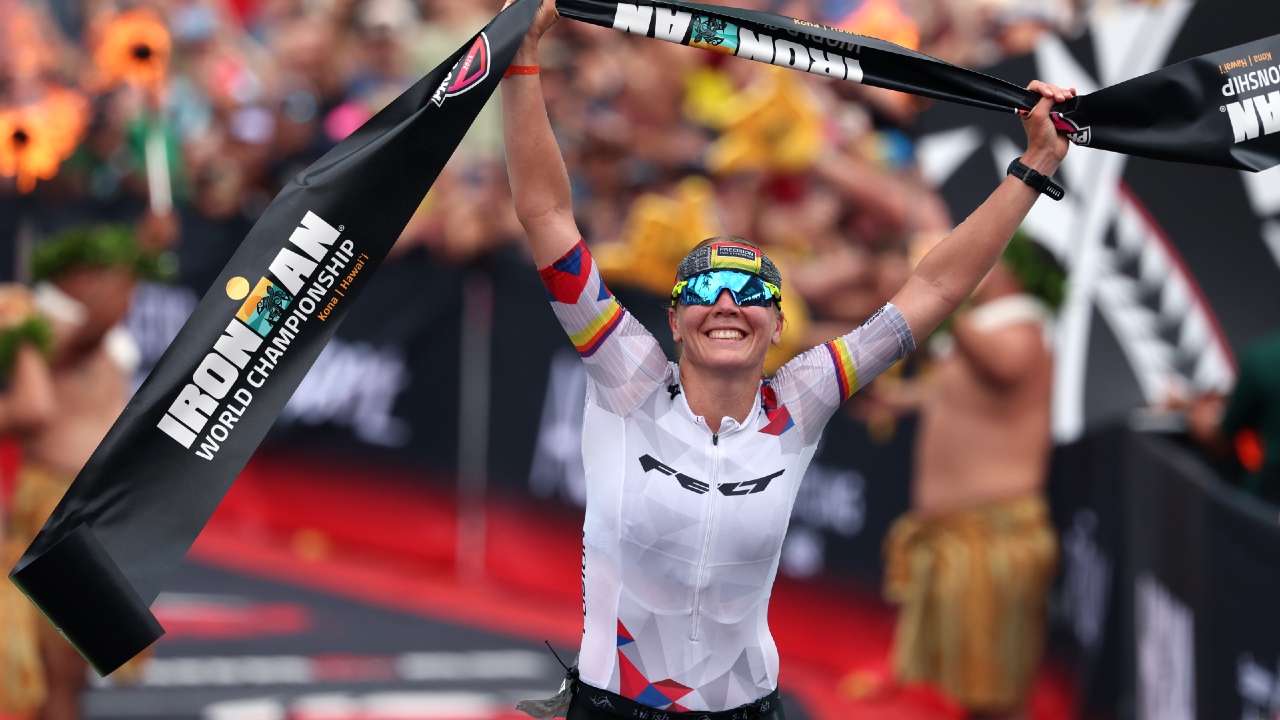On Saturday in Kona, Hawaii Billy Monger will bid to write his name into the triathlon world record books when he accepts the mighty challenge that is the IRONMAN World Championship.
The 25-year-old former race car driver – now a popular TV presenter and personality, notably for Channel 4 F1 – had both his legs amputated after a near-fatal race crash in 2017, but he has not let the severity of his injuries stop him from pushing boundaries in sport.
Back racing within a year of his accident, Monger clinched podiums in British F3 races, and in 2021, made his first venture in endurance sport, raising £3 million for charity when he walked, cycled and kayaked across England in four days.
For his next challenge, Billy will take on the toughest test in triathlon – 140.6miles in brutal heat and humidity – to celebrate the 40th anniversary of annual UK charity event Comic Relief.
Raising vital funds for the charity, Billy will race the World Championship course in Hawaii as an IRONMAN Ambassador Athlete and has his sights set on the record for fastest double amputee on prosthetic legs.
Hoping to break the record by finishing in under 16 hours, 26 minutes and 59 seconds, Monger’s journey will also be filmed as a documentary which will air on BBC One and iPlayer in 2025.
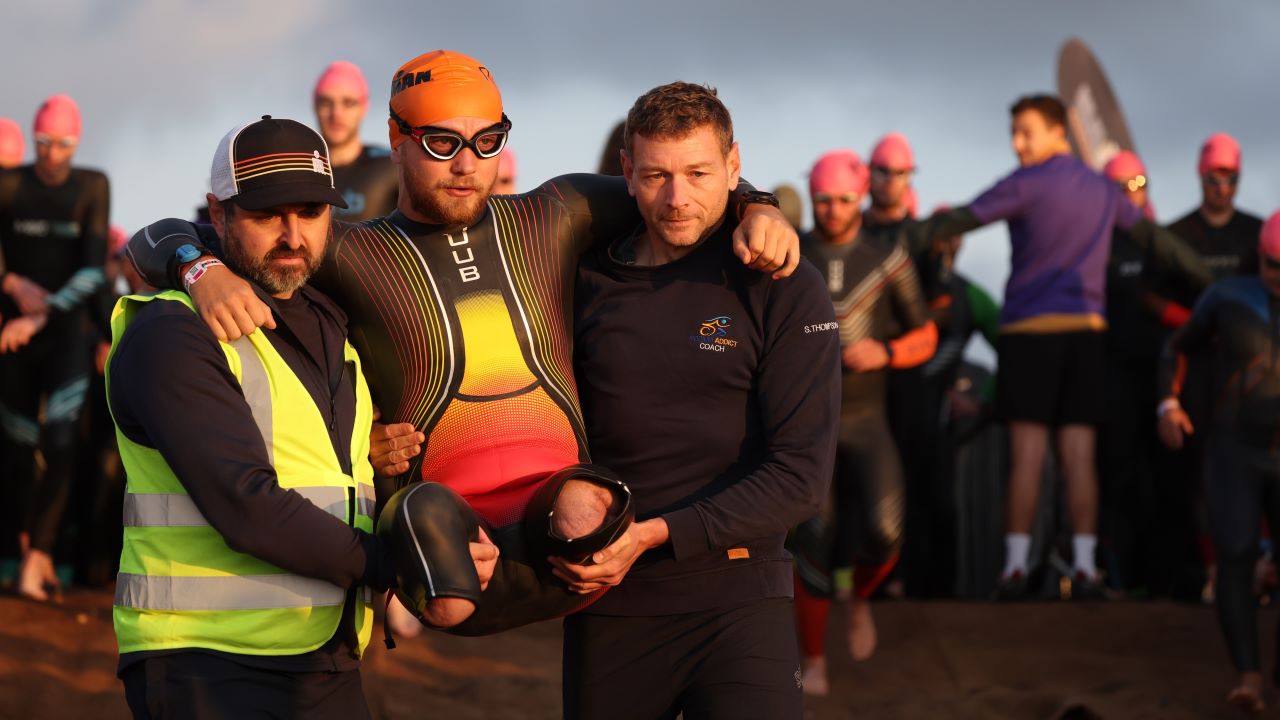
The road to Kona, how it all began
We sat down with Billy to talk about how his journey into triathlon, and his feelings as the Kona countdown hots up.
He told us: “My delve into the world of triathlon started off the back of my first Comic Relief challenge I did where I walked, cycled and kayaked 140 miles across four days – that was the first challenge I did for them back in 2021.
“The only element of triathlon I did there was cycling, where I cycled a full Ironman distance bike leg, 112 miles I believe, but it was split over two days because that is what my body could handle.
“After I did the challenge my trainer, who had been training me since my accident, said he really enjoyed training me for something so rewarding and I really enjoyed doing something for charity and that sense of knowing we were helping a lot of people.
“He went away and said do you fancy doing any more challenges and at the time my body was a bit broken and I was like ‘I need a few months off’, but I said if you go away and have a look at any challenges out there you think I’ll have a chance to do in the future, jot them down, and we’ll see in a few months if any off them catch my attention. “
There were many potential options for Billy, but the one which really piqued his interest was the record for a double amputee in Kona.
He explained: “That challenge was put to me because he saw my cycling speed, and this was with very minimal adaptions to the bike, prosthetics – we basically had three months of me learning how to ride a bike and the priority wasn’t about performance or speed, but all those things considered while I was riding a bike, I wasn’t that slow.
“I was nowhere near quick enough for where I need to be to beat the world record, but it just sparked a bit of possibility in my trainer’s mind, and I saw that challenge written down and the idea of doing an Ironman was something I would never have even thought of doing before my accident.
“The fact there was this potential for a world record to be broken in the process – there was just a couple of things as a competitor and an athlete that sparked my interest – I’d really like to get my teeth into something like that.”
Monger feeling the triathlon love
While his biggest test in swim/bike/run is yet to come, Billy has already loved every second of his races at Outlaw Nottingham and IRONMAN 70.3 Weymouth, particularly the way the triathlon community has accepted him.
“When I sit here talking about breaking a world record, everyone attributes me to being a professional in that regard, but I’m not a professional triathlete, I’ve being training for Kona since October of last year – so when I get on the start line it will be just over a year leading into Kona.
“I have dedicated an unbelievable amount of hours to the challenge and done a whole lot of learning in the process, and I’ve really enjoyed a lot of the process training for triathlon – very rewarding.
“But for me the biggest enjoyment I’ve got from the challenge is actually arriving at the events I have done so far – arriving at Outlaw in Nottingham for my first ever triathlon, meeting these incredible individuals that were doing the race alongside me who have their own battles and own journeys alongside me to get to that start line and the support of the triathlon community.
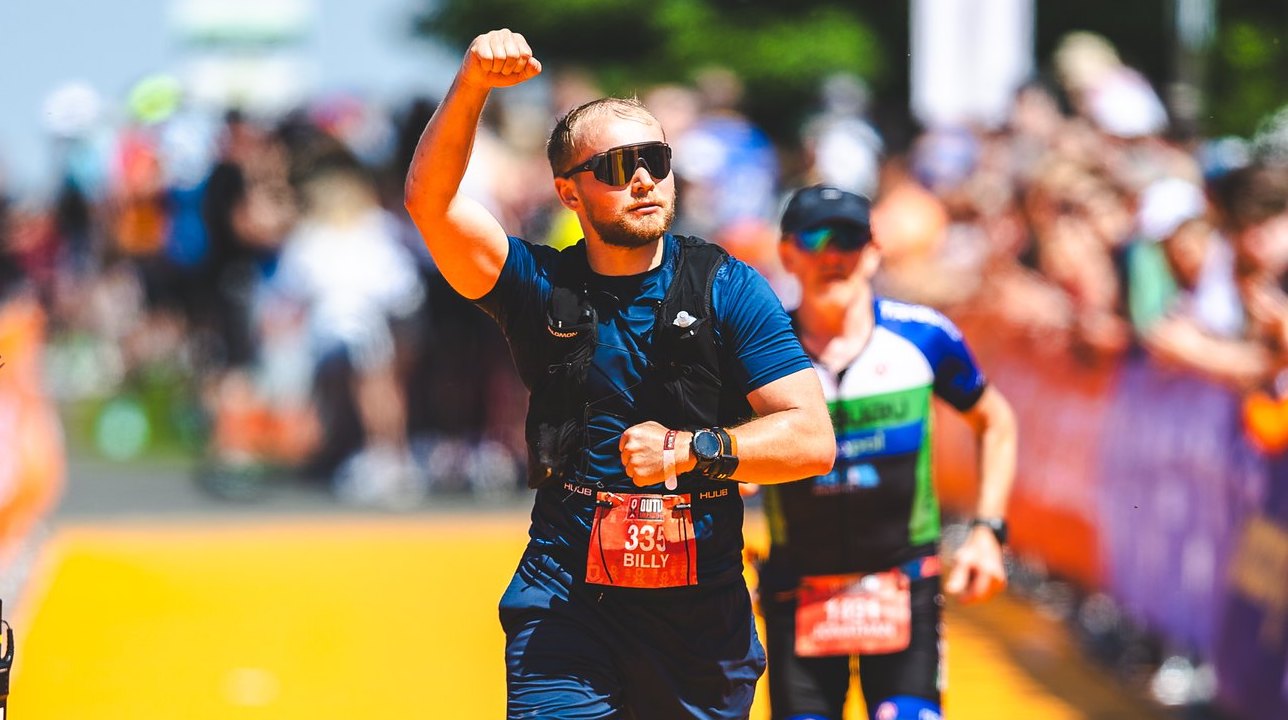
“I mean after my accident I was lucky enough to be supported by the Motorsport community in lots of ways and they really wrapped their arms around me and gave me all their love and support. We all think our sport is the only sport where those things happen, but by delving into triathlon I’ve learned it’s such a supportive community and everyone helps everyone in every way they can.
“The cheering on by spectators, me running past them, little cheers of encouragement that you can do this. As much as those events have been brutal and tough on the body and minds, they have been worthwhile in other ways. I love the spirit and community triathlon has provided whilst training for Kona.”
Tips and hints from the superstars
Billy has been looking to some of the stars for tips and hints about improving his performance ahead of Kona, and the time he spent covering the recent Paris Paralympics with Channel 4 gave him added insight.
“I’ve been lucky enough to speak to a couple of people, obviously earlier in the summer I was lucky enough to be involved with Channel Four at the Paralympics so I was speaking to a few of the paratriathletes – Lauren Steadman, Hannah Moore – I have had a chance to speak to a lot of them and obviously the paratriathlon distances are a lot shorter but its the same sport, same fundamentals, so its been really interesting to see them compete and spend some time at the Paralympics.
“And aside from that, a good friend of mine in the Formula 1 paddock Mark Webber knows a certain Jan Frodeno pretty well, so he introduced me to Jan via WhatsApp.
“I’ve also been just been following a lot of these athletes on social media as a fan – Lucy Charles-Barclay, there’s so many incredible athletes out there – I’ve been looking at YouTube videos, seeing any bits of information I can pick up along the way. It’s really been a learning process. “
Getting Hawaii ready
Billy has learned much already on his epic journey, with a ton of focus placed on adapting his body and fitness to the demands Kona will place on it.
“You learn so much along the way, I’ve been lucky enough to be surrounded by a lot of great people. Precision Fuel and Hydration have been doing all my hydration, I’ve been down for the last two weeks working in their newly-built heat chamber learning from sports scientists about how your body needs to acclimatise to heat.
“There have also been a lot of individual learnings as well, being a double amputee, there is a lot of things in fact that I have to deal with that other individuals don’t – having comfortable, well-fitting prosthetics that can be used for marathons and cycling such long distances. “
While Monger has been preparing for Kona for a year now, he admits that the sheer demands that preparation has placed on him have been an eye opener. Combining a high-profile day job with training for the most challenging of athletic tests.
“For me, I’m not a full-time athlete, so like a lot of Age Groupers and non-professionals it is fitting it in and around day-to-day life and making training a priority, that’s not an easy feat in itself.
“There are a lot of days where I have so much going on, and training throughout this process has been that kind of escape, that safe haven. For my own sanity I need to know that I get done what I need to get done. I don’t want any excuses, I’ll leave no stone unturned.
“Kona is not going to accept any excuses that may have crept in during training. Obviously that’s a challenge and something to deal with. And Triathlon, there is more too it than just swim, bike, run – it’s nutrition, it’s hydration, it’s getting the right strategies and get fuelling right so you don’t end up dehyrdrated.
“Obviously the races I have done, it has not been as hot and humid as Hawaii, so even with all that preparation when I turn up to Hawaii I will be facing conditions which will challenge my body in a different way to the way it has been challenged before.
“I guess all the heat chamber bits and having been surrounded by the right people and taking that information in will hopefully guide me through.”
While the triathlon community has been a real positive force for Billy, the F1 paddock is also right behind his bid for glory on the Big Island.

F1 drivers backing Billy
“I’ve had a really good response from the F1 community, a few of the F1 drivers are massively into cycling or duathlon – Jenson Button has done a few triathlons, Valtteri Bottas is big into his cycling.
“Earlier this year I was at Silverstone, working there, and George Russell joined me for a training bike ride round the circuit, so I have had great support from a lot of different people which has been really great to be honest.
“I think what has been nice is just to see and knowing what I am doing this for, the fact I’m doing it for a good cause, means people from all communities and different walks of my life are all on board and want me to do my best.”
On the subject of support from F1 drivers, which ones does Billy believe would successfully make the transition to triathlon?
George Russell a triathlon ‘dark horse’
“They are all very fit, they are very into their fitness, I know Valtteri Bottas is definitely a very good cyclist, so my gut would say Valtteri has got to be up there but then you look at some of the drivers like Estaban Ocon – he’s tall and got the frame for it.
“I’d probably say George Russell as well, he’s a bit of a dark horse – he’s tall, lean and in very good shape. So yeah, I reckon Valtteri, Estaban and George are my top picks.”
Despite his relatively tender years, Billy has already experienced more challenges than most people face in a lifetime. So what is it that makes him so resilient, and open to taking on new tests?
‘Life is still this amazing thing’
“I think my accident gave me an appreciation for how short life can be, there was a high chance that accident could have been the end for me – I’m very lucky and fortunate to be alive.
“I think it has provided me with these big challenges that I have had to overcome and have to overcome on a day-to-day basis – I feel like my life has an element of challenge to it.
“I try to embrace that rather than go with the ‘why me’ mentality – I’m in this situation, there is nothing I can do about it, but I can control my dedication and my hard work.
“By overcoming these challenges I learn a lot about myself and it gives me me inner confidence that I am capable of still doing a lot of big things in my life.
“Life is still this amazing thing even though I am a double amputee – I like to keep proving to myself that I am capable of doing what people think is impossible.
“Life isn’t over.”
Billy will take on that epic challenge in Kona, Hawaii on Saturday night UK time, and we will keep you right up to date with his progress throughout as he bids to break that world record and raise vital money for Comic Relief. We wish him the best!

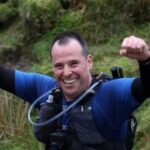





![Caroline Livesey wins the first ever Scottish National Gravel Championships in August 2025. [Photo credit: Outsider Events]](https://www.tri247.com/wp-content/uploads/2025/11/Caroline-Livesey-scots-national1.jpg)
